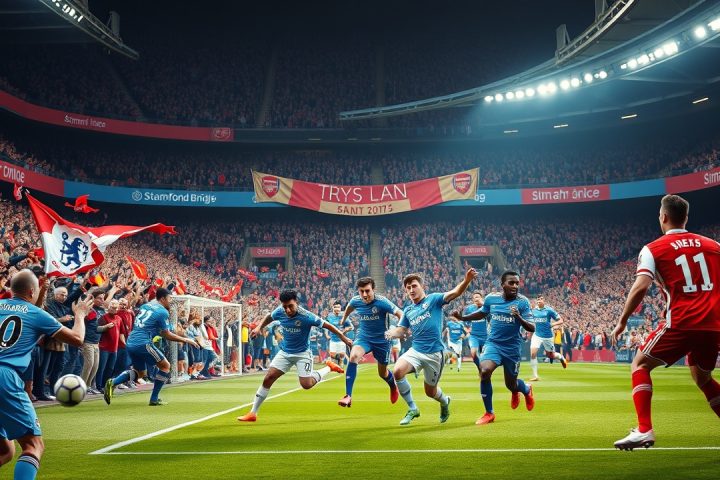Understanding Football Contracts
Top-tier footballers are among the most financially rewarded professionals globally, leading to contracts that are often lengthy and complex, filled with legal jargon that may perplex the general audience. Norwegian football scout Tor-Kristian Karlsen, who has held prominent roles at Monaco, sheds light on how these contracts are structured.
Salary Structures
While media outlets in the UK frequently report players’ earnings in weekly figures, the reality is that most top footballers are compensated monthly. This preference for weekly reports may stem from a tradition when players were more commonly paid on a weekly basis. In contrast, other European leagues, such as Italy’s Serie A, usually disclose annual salaries and often focus on net pay, whereas English Premier League salaries are typically presented as gross amounts.
Performance Incentives
Incentives tied to performance can vary widely. Clubs often implement structures where players earn set amounts for being fielded as starters or, for substitutes, a reduced fee based on their minutes played, potentially leading to cost savings for teams that wish to prevent excessive tactical changes in late-game scenarios. Each club develops distinct models aimed at motivating players, yet the flexibility surrounding bonus arrangements can lead to protracted negotiations. Agents may lobby for terms that secure more immediate bonuses for their clients, while club executives may prefer sticking to their established pay structures.
Personal bonuses are also part of the conversation, including payments for goalkeepers securing clean sheets or attacking players achieving assists or goals; however, elite clubs find these additional costs often redundant since players are expected to perform at their best without needing extra incentives. Team-wide bonuses, such as for league victories or cup wins, are more frequently negotiated at a collective level, often involving team captains representing the players.
Negotiation and Clauses
Players often negotiate achievement-related bonuses based on pre-set objectives, giving them potential for additional earnings if they contribute to the team’s success. Unique clauses can also be included, like bonuses for accolades such as Ballon d’Or nominations. For instance, reports indicated Manchester United had a similar clause included in Anthony Martial’s contract. Additionally, a “Matching Highest Earner” clause can be inserted, ensuring that a player’s salary rises to match that of new signings, which can complicate a club’s salary structure depending on the existing wage distribution.
Typically, a player’s base salary remains constant unless they significantly outperform expectations. In such cases, it is common for agents to seek contract revisions that may come with extensions. Unlike standard employment contracts, football players generally do not receive automatic annual raises, mainly due to the already substantial nature of their salaries and the typical short duration of contracts. Thus, any necessary adjustments are made either through renegotiations or by seeking new opportunities elsewhere.
Transfer Expenditures and Financial Fair Play
When clubs record transfer expenditures, these costs are amortized over the contract’s length. A player signed for €100 million on a five-year deal would be reflected as a €20 million cost in annual accounts. Conversely, transfer revenue is recognized immediately, providing more manageable financial records and easing compliance with financial fair play (FFP) regulations. Recently, UEFA updated these rules to limit amortization periods to a maximum of five years, an adjustment that Premier League clubs affirmed by the end of 2023.
Additional Payments and Perks
Additional payments above the base salary may involve signing bonuses or loyalty payments, which are typically awarded after fulfilling a contract duration. Furthermore, agents often request minor, personalized perks for players at contract finalizations, which can include travel accommodations for friends and family, relocation expenses, and childcare support.
Transfer Negotiations and Release Clauses
In transfer discussions between clubs, add-ons often relate to additional payments based on performance contingencies, such as achievements in tournaments or player milestones. For example, Real Madrid’s acquisition of Jude Bellingham from Borussia Dortmund included a €103 million upfront cost with an additional 30% in potential add-ons.
Players having a release clause in their contracts allows them to stipulate a fee that subsequent clubs must pay if they wish to sign them, adding a layer of autonomy for the player. While common in La Liga contracts, release clauses can lead to significant moves, as seen when Liverpool acquired Dominik Szoboszlai by activating his €70 million clause. Such clauses can also include conditions, which can become complicated in cases of relegation, like Tyler Adams’ move to Bournemouth triggered by Leeds’ drop to the Championship.
Conclusion
Transfer negotiations have also seen trends where clubs renegotiate payment terms related to release clauses. A prime example being Martin Zubimendi’s transfer to Arsenal, where Arsenal negotiated a total amount of €70 million settled over installments, highlighting the flexibility that may become a new norm for high-value transfers.
There’s often a playful creativity in the specific clauses included in contracts, though negotiations can extend when complexities arise, like Antoine Griezmann’s transfer setup that led to legal disputes over playing time clauses. Odd stipulations have made headlines, such as former player Dennis Bergkamp’s agreement barring air travel due to his fear of flying.
Overall, agents play a crucial role in structuring contracts and negotiating terms, serving as a vital link for information on a player’s market position. Depending on their involvement in transfers, agents can earn commissions typically set at around 5%-10% of the player’s salary or a significant fee from transfer negotiations—showcasing a financial ecosystem as layered as the contracts themselves.




